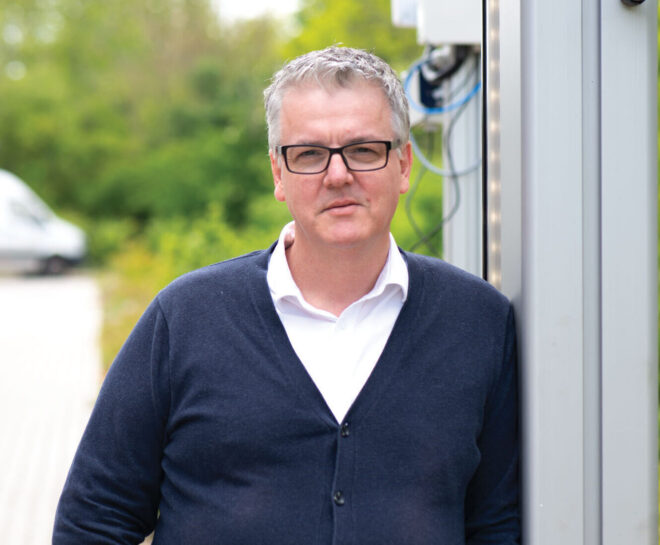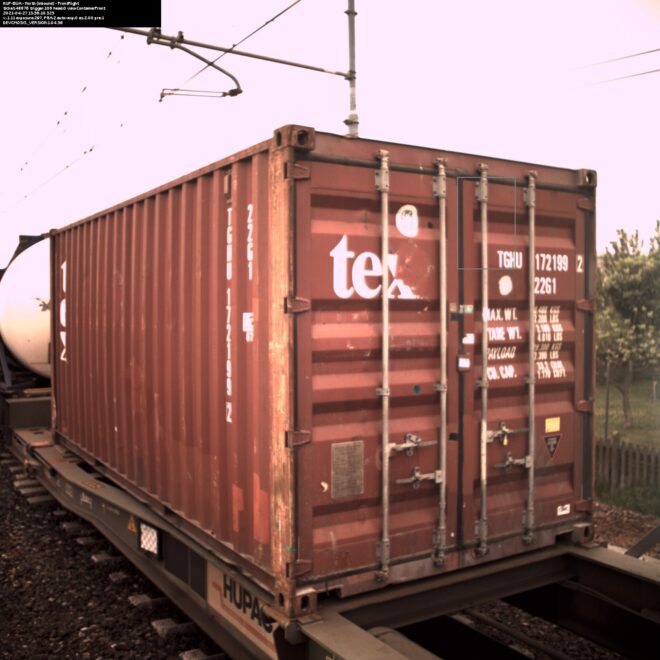
Empowering intermodal terminals through automation
Werner Peeters, Business Developer at Camco Technologies, shares his insights on how automated container, trailer and train wagon registration can accelerate the road to digital transformation.

Why is there a need to develop automation solutions for the inspection, identification and inventory of rail containers?
Intermodal terminal management systems, also referred to as Terminal Operating Systems (TOS), need accurate and instantly available data on incoming and outgoing trucks, containers, semi‑trailers, trains, and container moves during yard operations.
With hundreds of containers dropped off and picked up in the yard and transferred to trains, it becomes key to keep track of every move. Speed and accuracy of registered information are essential for process optimization and ultimately customer satisfaction.
What are Camco’s OCR Rail portal main benefits?
Intermodal terminals process several incoming and outgoing trains per day. When incoming trains run under the camera portal, a series of AI‑embedded cameras instantly register the container and semi-trailer ID as well as the rail wagon number.
As the complete train inventory becomes instantly available, time‑consuming visual checks by rail clerks become redundant. Occasional missing data can be double‑checked using the Train Gate Operator software application.
The big advantage of the Camco Rail OCR portal is the possibility of processing trains without delays, and increasing capacity. Also, high‑quality pictures are available for condition recording and damage claim management.

Please explain how the technology behind the Rail OCR works?
The Rail portal is equipped with intelligent cameras. With more than 80 rail OCR portals installed over 20 years, we have collected a huge data set of rail wagon, container type, or semi-trailer pictures. These are used to train neural networks to read container or trailer characteristics.
The AI-embedded cameras will automatically identify data strings, referred to as OCR, as well as specific features (OFR): container door orientation, seal presence, and even damage detection, or break shoe wear and tear detection.
If needed, our AI engineers can develop additional customized applications too. The same technology is used for our gate OCR and crane OCR solutions.
Where have your solutions been implemented and what has been the feedback so far?
Our OCR portals have been integrated into automation projects all over the world.
In the U.S. alone, more than 40 intermodal terminals rely on Camco Rail OCR systems. They come in different set-ups: in the U.S., container trains are often double stacked while in other places tracks may be electrified.
We are currently deploying Rail OCR portals in several Deutsche Bahn (DB) and Contargo intermodal terminals in Germany, ÖBB terminals in Austria, and the greenfield East-West Gate Terminal in Hungary.
The digital transformation of railroad container shipping can’t be stopped. We are helping rail companies and intermodal terminals to accelerate digital transformation all over the world.
What makes your solutions stand out from others within the rail industry?
With 20 years of expertise in container handover automation, we can say we understand the needs.
Our expertise is also reflected in our track record. Our systems are robust, reliable and are acknowledged for their accuracy and speed. We design hardware and develop the software, each accounting for 50% of our added value.
We integrate our systems in the terminal’s own management system. Dealing with just one vendor for the implementation of the complete project is a relief for terminal automation project managers.